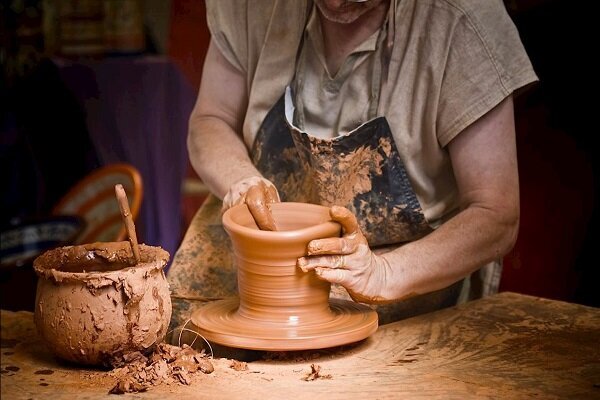National Seal of Excellence awarded to 37 Iranian handicrafts

TEHRAN-The National Seal of Excellence has been granted to 37 high-quality works handcrafted by artisans of Qazvin province, the deputy provincial tourism chief has said.
Potteries and ceramics, traditional jewelry, glasswork, woodwork, kilim, and traditional embroidery are among the works awarded with the National Seal of Excellence, Seyyed Meysam Hessari explained on Wednesday.
Quality, originality, innovation in design and implementation, and compatibility with the environment were the criteria used to choose selected handicrafts, the official added.
The National Seal of Excellence is given to high-quality, selected works to support craftspeople, improve the quality of their works and preserve the originality of this industry, and create sustainable employment.
With 14 entries, Iran ranks first globally for the number of cities and villages registered by the World Crafts Council, as China with seven entries, Chile with four, and India with three ones come next. In January 2020, the cities of Shiraz, Malayer, and Zanjan and the village of Qassemabad were designated by the WCC- Asia Pacific Region, putting Iran’s number of world crafts cities and villages from ten to 14.
Qazvin was once the capital of the mighty Persian Empire, under Safavids, from 1548 to 98. It is a major tourist destination with a wonderfully restored caravanserai-turned-arts precinct, some quirky museums, and a handful of decent eating options. For most travelers, Qazvin is also primarily the staging point for excursions to the famous Castles of the Assassins and trekking in the sensational Alamut Valley.
Also known as the castle of the Assassins, the 12th-century Alamut castle is nestled on top of a peak. It was once a shelter for the followers of Hasan-e Sabbah (1070–1124) who was a spiritual leader of an Islamic sect. In the early 1930s, British-Italian explorer and travel writer Freya Stark described her exploration of the place in her book “The Valleys of the Assassins”.
Qazvin is also home to one of the biggest roofed caravanserais in the country, Sa’d-al Saltaneh caravanserai. Dating back to the Qajar era, it’s a place for discovering tens of Hojreh or shops, cafes, yards, and a stunning mosque. It’s a place for visitors who want to experience the culture, cuisine, and hospitality of Iran.
ABU/AFM
Leave a Comment